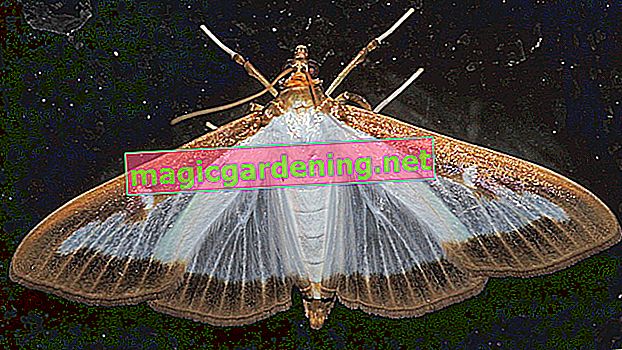
This is how the pollination of tomatoes works in closed rooms
Since tomatoes are mostly self-fertilizing, the wind and insects take on this important task in the field. Bumblebees cling to a flower and make it vibrate. Because of the vibration, the pollen buzzes around and fertilizes open flowers. Mother Nature's hands are tied behind glass, so that amateur gardeners can pollinate themselves. These methods have proven themselves:
- Shake tomato plants vigorously repeatedly in the greenhouse and on the windowsill
- Brush the blossoms of individual tomatoes in the pot with a soft brush
- alternatively, let the climbing aids vibrate with an electric toothbrush
- all methods must be carried out on several days in a row
also read
- Nature provides the best fertilizer for tomatoes
- Manually pollinate the pumpkin for a single variety
- Fertilize tomatoes yourself - this is how you force the fruit set
The pollination works perfectly as long as the relative humidity is between 50 and 80 percent. In addition, the pollen clump together and are no longer released. If the value falls below 50 percent, the germination capacity of the pollen is reduced. In addition, the temperature must not crack the 30 degree mark. Experienced hobby gardeners therefore invest in a hygrometer and a reliable thermometer.
Single variety propagation thanks to targeted pollination
As long as you are cultivating the plants of a single tomato variety, pollination takes place in the greenhouse and on the windowsill. If, on the other hand, other breeds come into play or if wind and insects get to the tomato cultivation in the field, varietal purity is no longer guaranteed. If you aim to harvest hand-grown tomato seeds for propagation, prevent unwanted cross-pollination with a simple trick.
Before the flowers open, either cover the entire plant or individual flower panicles loosely with a close-meshed insect net. The petals must still be able to unfold underneath. Excess flowers are broken off. Suitable materials for an insect-proof cover are tulle or gauze. A single tomato blossom can also be protected from cross-pollination using a tea filter.
Even the most skilful pollination will not be successful if the tomato plant does not develop vital flowers. Careful maintenance is the foundation for the entire process. The water and nutrient supply must be in balance as well as the site conditions.
Tips & Tricks
The vast majority of tomato varieties are self-fertilizing - but not all. Wild tomatoes, for example, are not included. Instead of messing around with lengthy strain descriptions, just take a look at the flower. If the stigma protrudes from the petals, it is one of the rare non-self-fertilizing varieties. In this case, a second tomato plant is generally required for pollination.








